Good-Game, Well-Played: Ethical Game Design Strategies for Positive Online Play
Siddhant Singh

About the project
With the gaming industry’s incredible evolution, there is an emergent need to balance player engagement with well-being. The “Good-Game, Well-Played” design research navigates the nuances of ethical game design, aspiring for harmony between deep immersion, reality, and players’ holistic health.
Insights drawn from surveys with game designers and in-depth Q&A sessions on Reddit reveal the ethical dilemma: while player retention remains their top priority, there’s heightened cognizance about the ethical ramifications of specific game strategies and mechanics. These discussions also revealed underlying anthropological conditioning regarding game design standards and ethical responsibility.
This design research identifies four potential pathways to apply ethical design practices in the games industry through marketplaces, policy & rating boards, game systems, and self-regulation. Furthermore, the explorations hone into the power of game systems and narratives as a medium to bridge player engagement and player well-being.
By conceptualizing and prototyping the integration of positive game mechanics through narrative elements into popular online game titles, this research offers an unconventional blueprint for future game designs that actively prioritize both, captivating gameplay and player welfare rather than an afterthought.
The thesis adopts a conversational tone in its writing style, engaging creatively with its audience of game designers, developers, and gamers, fostering a dialogue that bridges professional insights with the lived experiences of the gaming community.

Anthropological Conditioning
// Problem Area 01
Primary research, including surveys and Reddit Q&A sessions, reveals a persistent mindset among game studios, designers, developers, and players. At this point, they simply don’t consider the playtime quality and player engagement as crucial as entertainment.
Oftentimes, these practices are rooted in decision-making amongst the higher-ups, especially in AAA studios. Game designers who are pushing more than just pixels still try to do their bit but they are bound to oblige to the requirements, eventually blurring the lines between engagement and addiction.
The Vicious Cycle
// Problem Area 02
It’s 2024, and we’re still building on the same foundations. Better? Yes. More player-centered approaches? Kind of. Ethical views and well-being are still an afterthought. Despite advancements, the industry still struggles to harmonize player engagement, retention, and well-being.
Business-driven models like “Free to Play” and “Live-Service” often lead to design choices that prioritize player retention over positive player experiences.

The Reddit Castle: Understanding the State of Play
The quest led me through a maze of game psychology, developer diaries, and heart-to-heart Reddit convos, uncovering a pattern: a conditioning that locks both players and developers in a cycle focused on monetization and compulsive play. But, like finding a secret level, I also discovered communities and creators eager for a shift towards more responsible gaming landscapes.
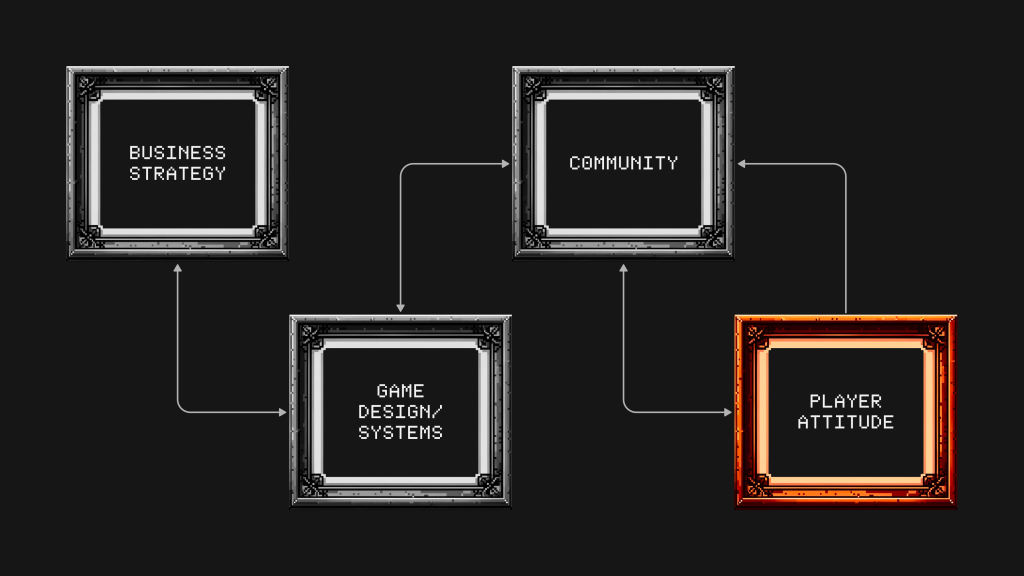
To sum it up, when the business strategy adopted the Live service model, it shifted the bones of the game design process. They were now designed so differently with features prioritizing player’s engagement over valuable retention. GGWP refers to it as hyper-engagement.
Meanwhile, the gamer community is highly adaptive. Throw anything at them and they will figure their way around it no matter the cost. In this case, the cost was the change in the ways they consumed games or felt about them in general. These behavioral changes escalate to individual player attitudes that include the need to play more, spend more, win more and the list goes on. All these shifts create a domino effect where the business receives reciprocation to continue with such ethically questionable practices.
Ethical Pathways
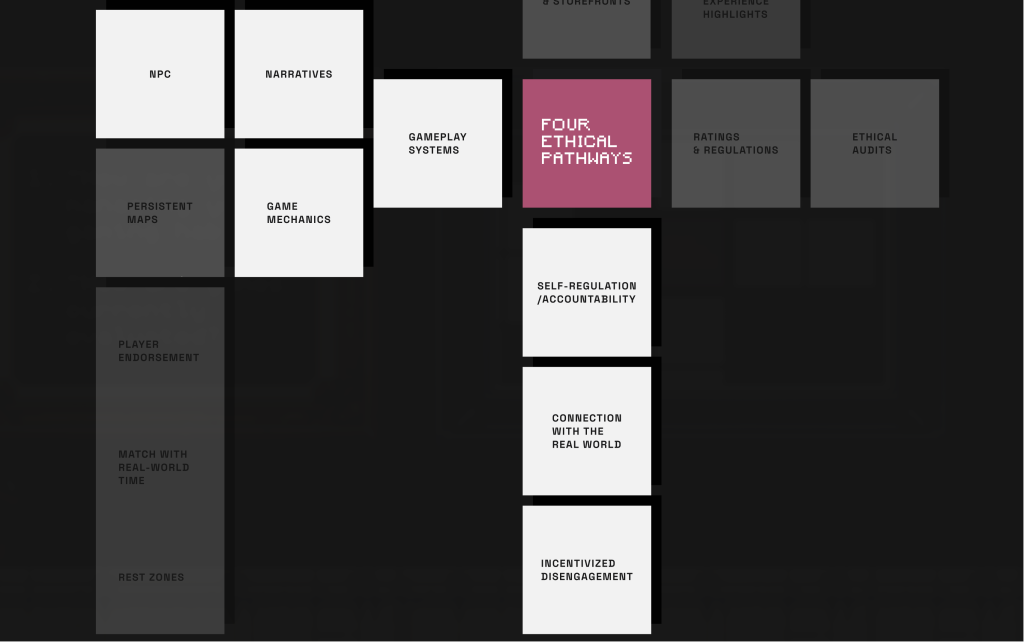
Navigating through this digital odyssey, four ethical pathways emerged as beacons: marketplace integrity, policy and rating board evolution, the power of self-regulation, and, most intriguingly, the transformation of game experience and mechanics. Each pathway, a quest in its own right, points towards a horizon where games are designed with a player-first ethos.

Making Good-Games
Before setting the stage for concepts, I revisited the classics – from World of Warcraft to Cyberpunk 2077, dissecting how their immersive worlds and narratives could sometimes lead players down a rabbit hole of excessive gaming. Finally, three key projects emerged that combined all the learnings from various pathways and case studies:
Intent-Based Gaming
Addressing player engagement by exploring a concept based on Spotify’s enhanced playlist feature. The game curates a session based on the player’s intent.
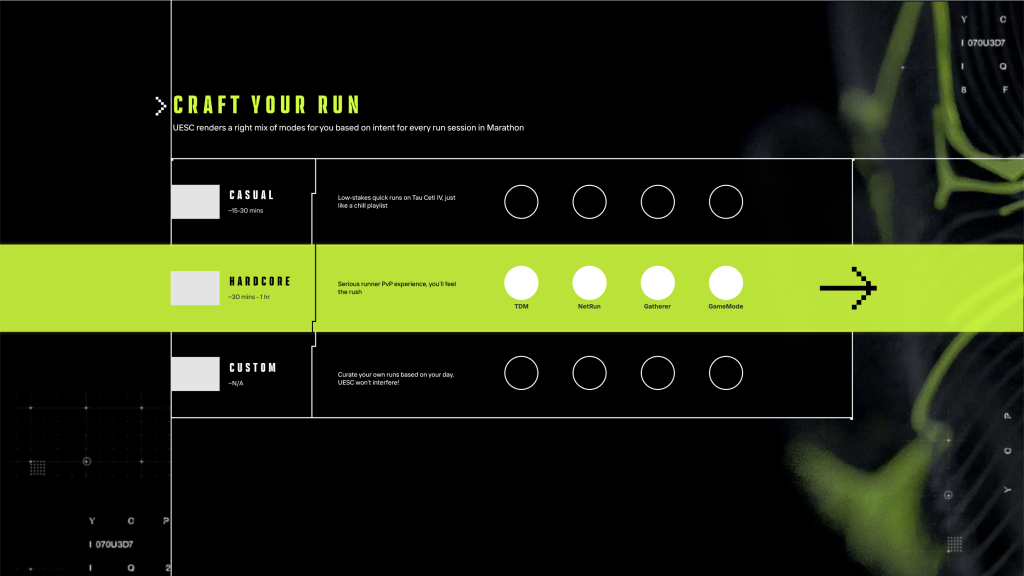
Players could embark on these runs solo or with friends and, upon completion, receive bonus XP to encourage wrapping up their session. Moreover, the game cleverly generates a new tailored run for the next day, incentivizing players to step away and return later.
The solution tackles it through a system-driven solution as opposed to being a game mechanic.
AI Skins vs. Toxicity
Focused on player’s mental health in competitive scenarios. Many games push our skills to the limits against other players. This is when toxicity becomes inevitable.
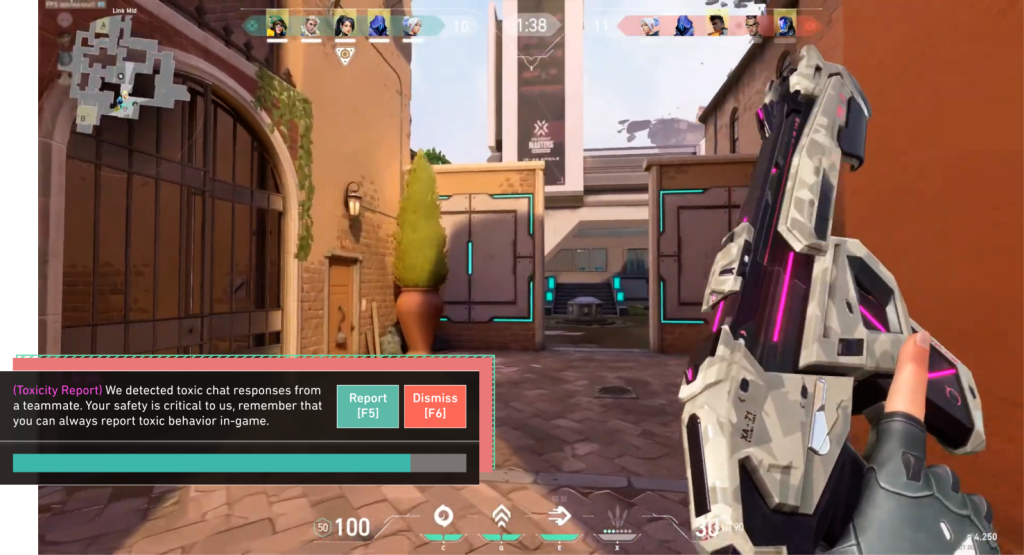
These interactive AI-powered skins would surface disruptive behavior and empower the players to report it while also educating them, not to forget training the AI models for accuracy over time.
This project was also a stab at balancing business needs and player health. Not too disruptive, just repurposing what they have into something meaningful. It creates a fair ground where game assets become an influence of safety.
Player-Aware NPCs
This project became a highlight dissemination of GGWP. It reimagines NPCs (Non-Playable Characters) to be more than just support in the storyline, a voice of reason.
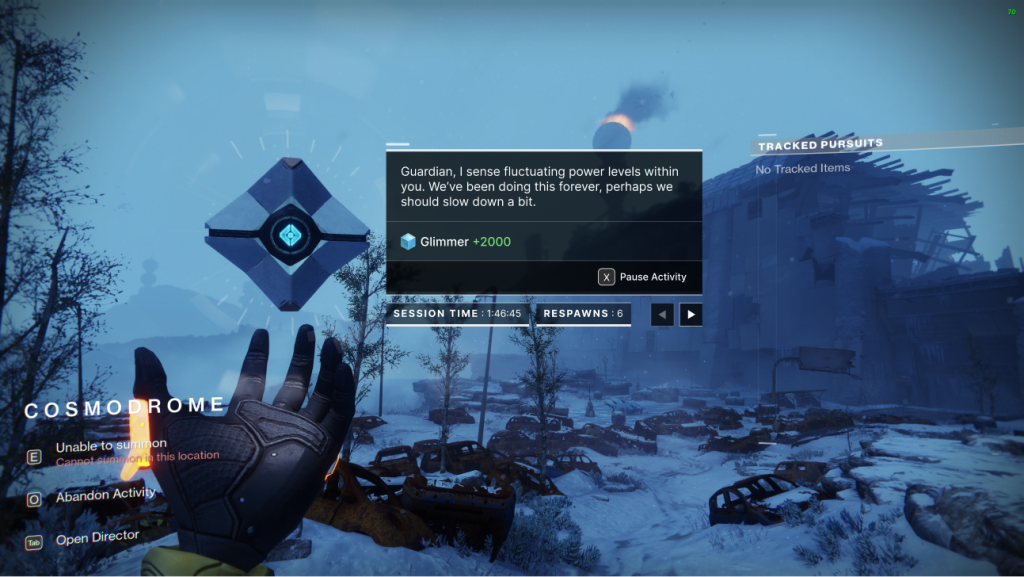
Combined with a few key metrics like session duration, number of retries, and a few others that the game already tracks, NPCs could easily incentivize disengagement or suggest a less intense activity by conversing with the player.
The difference here is that unlike screen time or parental controls, this is drastically less disruptive and less likely to be ignored.

Quests beyond Quests
This journey is more than a personal endeavor; it’s a call to arms for the industry to embrace a future where games are crafted not just for thrills but for well-being. As we venture forward, the goal is clear: to ensure that the next generation of games enriches as much as it entertains, fostering environments that respect player time, promote mental health, and celebrate community.
To the creators, players, and dreamers who’ve joined me on this quest, our adventure is just beginning. Together, we can redefine gaming, turning every “Good-Game” into a well-played story of wellness and joy.





